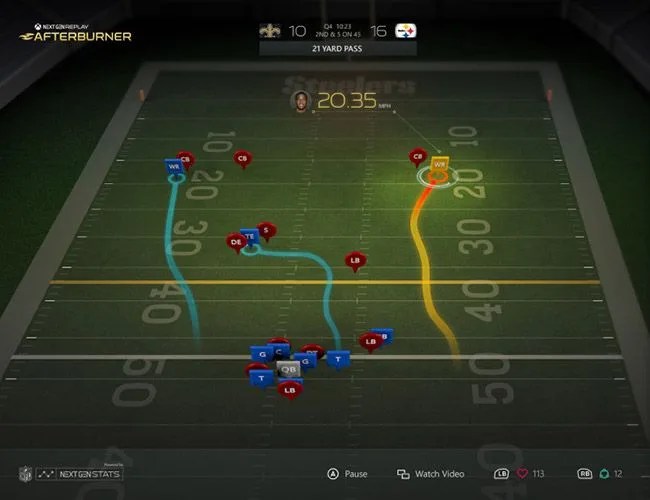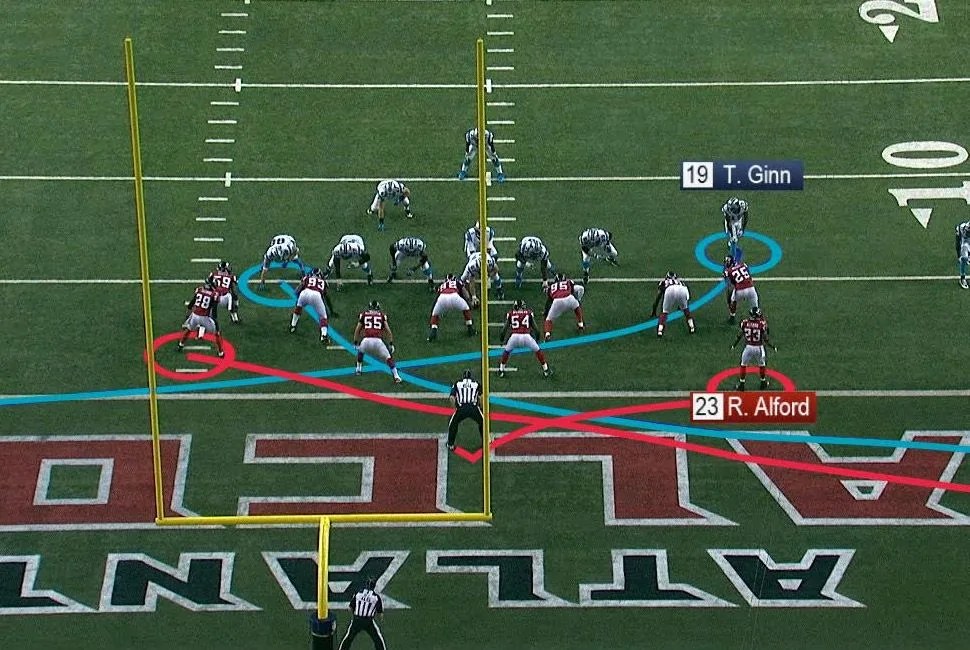Wearable technology is everywhere, including pro sports. European soccer leagues have long tracked the stats of players including total distance run, shot speed and the distance of a free kick to the goal through a series of cameras positioned around the pitch. The MLB debuted a similar approach to stat tracking earlier this year. And the newest league to follow this stat-tracking trend is the NFL, which in the 2015 season will be equipping players with RFID tags, welcoming a new era in professional sports data.
The sensors and RFID readers, or radio-frequency identification chips, are manufactured by Zebra Technologies, a massive global company that has offices in 26 countries and recorded over $1.6 billion in total revenue in 2014. The Lincolnshire, Illinois company partnered with the NFL in the 2013 and 2014 seasons for a limited trial of the technology, and received a full-time contract for every game in the 2015 season. The company has a background in industrial manufacturing; the system started out life in retail applications, supply chain applications, health care and even schools. The system was also implemented by Michael Waltrip Racing in NASCAR for use in practice as well as tracking the performance and efficiency of pit crews.
The RFIDs, which are roughly the size of a quarter, will be installed in the shoulder pads of every player. That makes for a lot of sensors: With two per every one of 1,696 players, 3,392 RFID sensors in total. With this many sensors being implemented, durability and battery life were certainly concerns. “We house it in a piece of plastic that is super durable. Not only are they hit on the field, but they are, interestingly enough, [able to be] washed and dried,” said Jill Stelfox, Vice President and General Manager of Location Solutions for Zebra Technologies. Their track record last season, in terms of durability, was impressive. “In our case last year, we didn’t have one tag that cracked because of a hit or [that] died in the dryer,” Stelfox added. The tags’ batteries are designed to last the full season. To prolong battery life, Zebra Technologies installed an activator over every locker room door in every NFL stadium. The activator reads the tags as players walk underneath it. “So when you come out during warm-ups it turns on your tags, and when you go back at the end of the game it turns your tags off,” said Stelfox. “We didn’t replace a battery last year.”

The RFIDs will ping 22 sensors placed around the stadiums, giving Zebra Technologies the player’s location within six inches. This accurate positioning system starts with a simple latitude and longitude coordinate, which then allows for new stats to be compiled, including speed, distance, acceleration and jump height. These new stats could assist team management in player evaluations, giving them access to information that was previously unavailable. Coaches and fans will, for the first time, be able to see hard stats with data like how far away a receiver is from his defender at any point during a play, or how fast a player is running and his total yardage covered. This type of real-time game data is unprecedented in professional sports. It will also be used during TV broadcasts as data points and infographics that will provide spectators unprecedented access to the metrics of players on the field. “This is the first time that wearable sensors are used to broadcast information in real time in a game,” said Stelfox.
At first glance, many could see this new cache of stats as being unlocked potential for fantasy football leagues. But Vincent Verhei, contributor to Football Outsiders, isn’t so sure. “Until we get a few years of data to analyze, it’s hard to say how useful any of that data would be,” he said. Verhei doesn’t see the stats being useful unless points start being awarded to players for superfluous statistics. “Unless fantasy leagues start giving points for miles per hour each player runs or something, I can’t really think of much impact they would have in fantasy football,” he added.
But Blaine Blontz, NFL correspondent for Fantasy Pros, sees the possibility of stats affecting fantasy football leagues in the future. “Since it’s positive for the game, we do anticipate there being a trickle-down effect,” he said. “If it helps with the on-field product, and the analysis available for individual players, there would likely be a positive impact on the fantasy football community.”
Despite the lack of influence these stats may have on fantasy football this season, Stelfox says the importance of the new trackers all comes down to the fans. “The NFL did this because of the fans, and that’s who is getting the information first. Last year for example, we showed on television JJ Watt intercepting a pass and then running at 19.9 mph. That became the topic of conversation. Who knew that guy could run that fast for as big as he is?” In short: incredible plays, incredible metrics.
